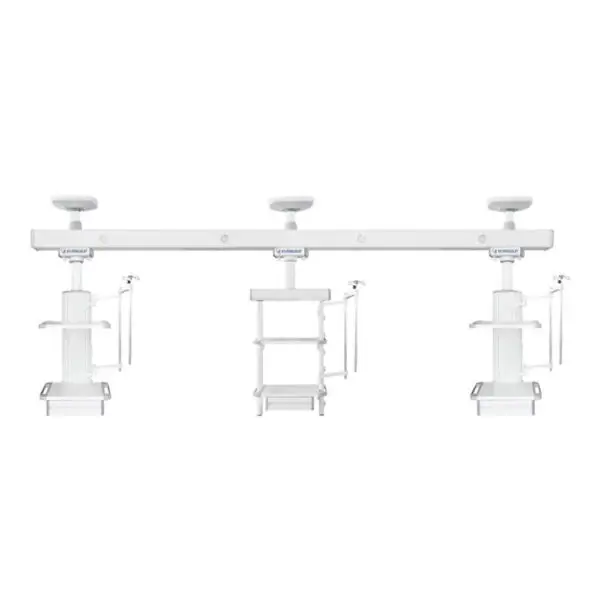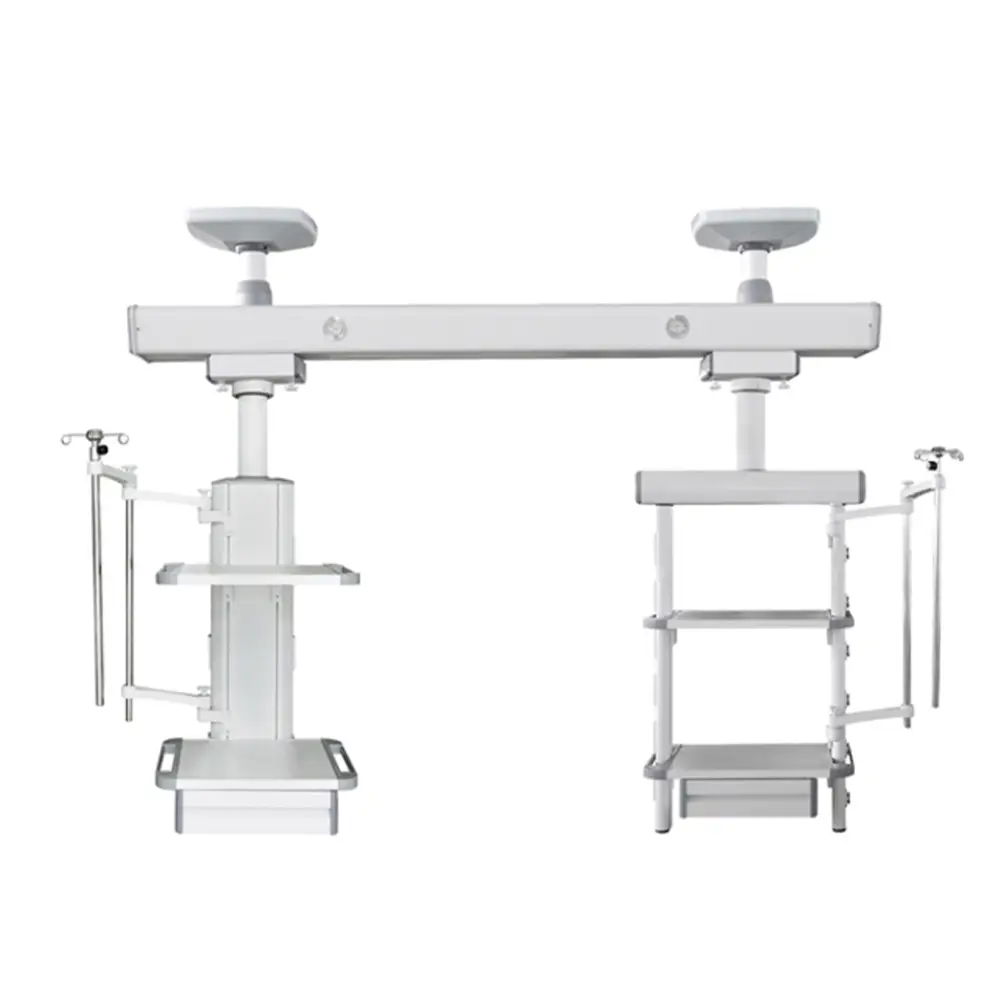Die Anschrift
304 Nordkardinal St.
Dorchester Center, MA 02124
Arbeitsstunden
Montag bis Freitag: 7:00 - 19:00
Wochenende: 10:00 - 17:00
Willkommen auf meinem Blog!
Bevor wir uns in die Inhalte vertiefen, würde ich mich freuen, wenn Sie mir auf meinen Social-Media-Plattformen folgen, wo ich weitere Einblicke gebe, mit der Community interagiere und Updates poste. So können Sie mit mir in Kontakt treten:
Facebook:https://www.facebook.com/profile.php?id=100071234835011
LinkedIn:https://www.linkedin.com/company/74943205/admin/dashboard/
YouTube:www.youtube.com/@shandongexpertmedicalequip4695
TikTok:www.tiktok.com/@expertmedical
Lassen Sie uns nun gemeinsam unsere Reise beginnen. Ich hoffe, Sie finden die Inhalte hier aufschlussreich, spannend und wertvoll.

A medical pendant system is an essential piece of equipment in modern intensive care units (ICUs). Designed to streamline workflows and support life-saving interventions, these systems suspend critical utilities like medical gas outlets, electrical outlets, and data ports from the ceiling. By doing so, they free up floor space, improve accessibility, and reduce the risk of tripping hazards. These systems can be fixed, movable, or motorized and often come equipped with arms or consoles that rotate or extend to reach patients with ease.
In an ICU environment, where time and precision are crucial, a well-designed medical pendant system can significantly impact patient outcomes. It enhances efficiency, reduces clutter, and ensures that life-supporting devices are always within reach. In this article, we will explore the top benefits of integrating a medical pendant system in ICU settings, supported by data and user experiences.
As hospitals continue to modernize, the integration of smart infrastructure like pendant systems is no longer a luxury but a necessity. The goal is to optimize every square inch of critical care space while ensuring reliability and rapid response. Let’s dive into the key advantages that make the medical pendant system a game-changer for ICU units worldwide.
ICUs are high-pressure environments where every second counts. A medical pendant system allows healthcare professionals to organize and access essential tools and services in a structured and efficient manner. By centralizing gas, power, and communication lines, these systems eliminate the need for multiple wall connections and tangled cords.
This centralized access not only speeds up routine processes like administering medication or adjusting ventilator settings but also minimizes errors caused by disorganization. Over time, streamlined workflows lead to increased patient throughput, improved safety, and more consistent clinical outcomes.
Safety is a top priority in any ICU. By suspending devices and wires above the ground, the medical pendant system minimizes the risk of falls, tripping, and equipment collisions. Moreover, these systems are built to support heavy loads, ensuring stability and durability in demanding conditions.
In addition, the structured design of a medical pendant system reduces the physical strain on medical staff. Equipment is positioned ergonomically, lowering the chances of repetitive motion injuries or back strain when handling heavy monitors or devices. For both patients and clinicians, this translates into a safer, more accessible environment.

Hospitals often face space constraints, especially in critical care settings. A medical pendant system helps optimize the use of available space by lifting devices off the floor and integrating multiple utilities into a single unit. This feature is particularly beneficial when accommodating multiple monitors, ventilators, infusion pumps, and other devices around a single patient bed.
By eliminating cluttered floor setups, the system allows for better movement around the patient, especially in emergency interventions where quick maneuvering is essential. Furthermore, the organized overhead configuration allows hospitals to maintain a cleaner, more professional appearance, which also reassures patients and their families.
Modern pendant systems are highly customizable. They can be configured based on the unique requirements of a facility or department, including arm lengths, rotation angles, and the number and type of utility outlets. This adaptability ensures a tailored solution for every ICU.
For example, pediatric ICUs may require specialized mounts and size considerations, while surgical ICUs may need additional outlets for high-powered devices. Custom solutions ensure that every clinical need is met without compromising on usability or safety.
Hygiene is crucial in an ICU where patients have weakened immune systems. Traditional setups with wires and devices on the floor can harbor dust and pathogens. A ceiling-mounted medical pendant system significantly reduces contamination risks by making it easier to clean the floor and surrounding areas.
In addition to ease of cleaning, many pendant systems are now manufactured with antimicrobial materials that further support hospital-wide infection control protocols. Their smooth, sealed surfaces prevent the accumulation of dust and biological matter, allowing for quick disinfection between patient turnovers. This can contribute to lower rates of hospital-acquired infections (HAIs), which remain a critical concern in modern healthcare.
ICUs often host a team of specialists—nurses, doctors, respiratory therapists, and others—who work simultaneously around a single patient. A medical pendant system provides easy access to necessary tools for all team members, promoting collaboration and reducing time wasted in shifting equipment.
Because the system allows various devices and services to be accessed from all sides of the patient bed, clinicians can perform tasks simultaneously without interference. This encourages real-time communication and teamwork, especially during complex procedures or emergency responses where coordination is key to positive outcomes.
Below is a table showcasing key functionalities of a medical pendant system and their direct benefits in an ICU setting:
| Besonderheit | Funktionalität | Benefit in ICU |
|---|---|---|
| Medical gas integration | Supplies oxygen, vacuum, air, etc. via ceiling unit | Centralized and easily accessible life support gases |
| Electrical outlet availability | Powers monitors, ventilators, and other medical devices | Eliminates extension cords, reducing clutter |
| Rotating/movable arms | Adjustable for patient access and staff convenience | Custom positioning around the patient |
| Equipment load support | Holds infusion pumps, monitors, suction units, etc. | Frees up floor space and improves safety |
| Data ports and communication lines | Connects to hospital network and nurse call systems | Enhances patient monitoring and communication efficiency |
| Modular design | Customizable for department-specific requirements | Adaptable to evolving ICU needs |
| Enclosed cabling | Wires enclosed within arms or units | Promotes hygiene and reduces contamination risk |
Each of these features contributes to a seamless and functional ICU environment. By combining multiple utilities into one system, medical staff can work more efficiently, and patients can receive uninterrupted care.

In emergencies, rapid access to life-support systems and communication tools is vital. A medical pendant system ensures that essential utilities are always within arm’s reach. Its ergonomic design and strategic placement can make a difference between life and death when seconds matter.
During code blue situations or sudden respiratory failures, clinicians need immediate access to oxygen lines, defibrillators, and monitoring equipment. Having these resources integrated within the pendant system reduces time to intervention and prevents miscommunication among team members. Additionally, having fewer cords and devices on the floor creates a safer and faster response zone.
Today’s ICUs are becoming increasingly digitized. Medical pendant systems are being integrated with smart technologies such as touchscreen panels, remote diagnostics, and IoT-enabled monitoring devices. These integrations allow healthcare professionals to control lighting, monitor power usage, and even receive system alerts from the pendant unit.
These intelligent systems can also provide real-time analytics about energy consumption, usage patterns, and maintenance needs. This not only improves operational efficiency but also aligns with hospitals’ goals for sustainability and cost control. As ICU technology evolves, medical pendant systems will remain a foundational component supporting innovation.
While installing a medical pendant system requires upfront investment, the long-term benefits far outweigh the costs. These systems contribute to:
Hospitals that have adopted advanced pendant systems report fewer incidents, improved workflow, and higher patient satisfaction scores.
In financial terms, the return on investment (ROI) for a medical pendant system becomes evident through reduced equipment downtime, fewer work-related staff injuries, and shorter patient stays due to improved care delivery. Over time, the system pays for itself in both direct and indirect savings.

Across the globe, hospitals that have incorporated medical pendant systems into their ICU layouts have seen notable improvements. For example, a tertiary care center in Singapore reported a 25% reduction in patient response time after installing modular medical pendant systems. Similarly, a hospital in Germany observed enhanced nurse satisfaction and reduced physical strain thanks to movable arms and ergonomic console positioning.
Another case from Canada revealed that ICU space optimization through pendant systems allowed the hospital to increase patient capacity by 15% without expanding its physical footprint. These outcomes reinforce the practical, real-world value of investing in a robust pendant infrastructure.
Abschließend sei gesagt, dass die medical pendant system is a cornerstone of modern ICU infrastructure. From improving safety and hygiene to enhancing workflow and supporting new technologies, the benefits are comprehensive and impactful. Hospitals that embrace this innovation will find themselves better prepared for both everyday care and critical emergencies.
If you’re planning to upgrade or design a new intensive care unit, integrating a high-quality medical pendant system should be a top priority. Kontaktieren Sie uns today to explore how our pendant systems can transform your ICU into a safer, more efficient, and future-ready environment. Our expert team is ready to assist with customization, installation, and support for your facility’s success.
What is the purpose of a medical pendant system?
A medical pendant system organizes and delivers essential utilities like medical gases, power, and data ports in critical care areas, helping optimize ICU space and safety. It is designed to make patient care more efficient and organized.
Wie funktioniert ein medical pendant system improve workflow?
By centralizing equipment and lifting it off the floor, it reduces clutter and improves accessibility, enabling medical staff to work more efficiently. It supports faster response times and better coordination during treatment.
Can a medical pendant system be customized?
Yes, most systems are modular and can be tailored to specific ICU requirements, including the number of arms, outlets, and types of integrated utilities. This ensures the system matches the operational needs of the medical team.
